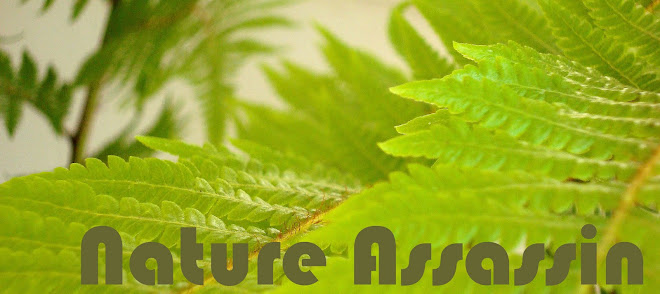Happy spring, my bishes! It's is officially here, and it seems that roughly half of the inhabitants of the household have decided to get busy with the babies. Not the Monsieur or myself, thank you very much. I will casually defenestrate a plant at the first sign of obstinacy, so I shudder to think about what I'd do with a baby. Maybe my plants saw the death strokes that befell the two sickly ferns during the recent repot, and they decided to put on some new growth to please me. This was rather intelligent of them, I think.

Et tu, Nephrolepis?
So here's what we've got. My little tiny Aloe "Dorian Black" now has a pup. "BUT SHE'S SO YOUNG!" I know, I know. I told her the same thing. I can't say I'll be sad to have another one of these, though... I mean look at it! It's stunning, almost completely white.

My Meyer lemon seeds have finally sprouted! Do you see my thrifty invention? I took one of those clear egg cartons and made a little incubator out of it. It's always moist and gets plenty of sun, plus it sits between the window and the radiator, so it never gets chilly. I opened it up for this picture:

The Epipremnum aureum "Marble Queen" immensely enjoyed its repot. I also rooted this winter's cuttings, which are doing fine. It's in a really fast-draining medium of mostly pumice and pine bark fines. Rapidly, it became bushy with new growth.
 Here's a better shot of the color. The new leaves are almost completely white, probably because they're getting more sun.
Here's a better shot of the color. The new leaves are almost completely white, probably because they're getting more sun.
Here's the baby crosiers from my Nephrolepis "Emina." Now in a slightly peat-ier medium.
 My teeny-weeny Philodendron "Moonglow" has put on a new leaf after I gave it a much-needed soil change.
My teeny-weeny Philodendron "Moonglow" has put on a new leaf after I gave it a much-needed soil change.
The beastly Philo "Black Cardinal" has finally adjusted and is putting out this beautiful new leaf:

Strelitzia Reginae is now completely mealybug-free and putting on tons of new growth after being potted up:
 Sansevieria "Bally" has made a baby offshoot:
Sansevieria "Bally" has made a baby offshoot:And as usual the cats are all up on it. We keep telling them that they are both fixed, and will never consummate their love, but do they care? No, they just continue making out on the couch when we have friends over, which is awkward for everyone.


















